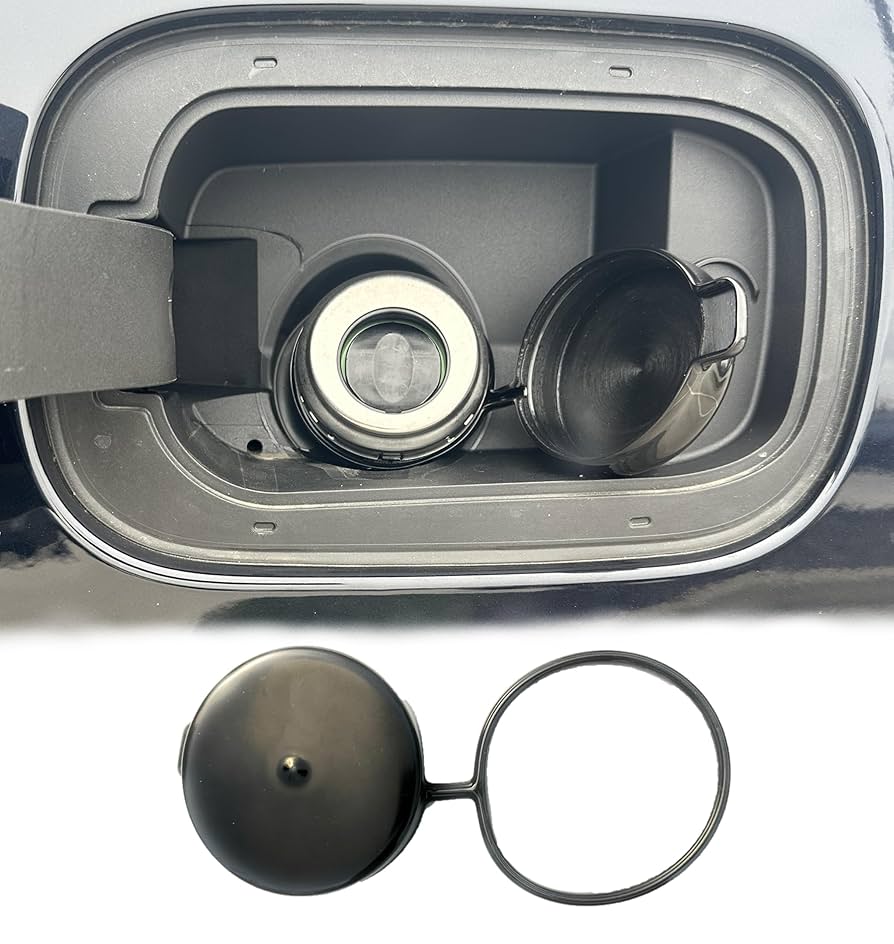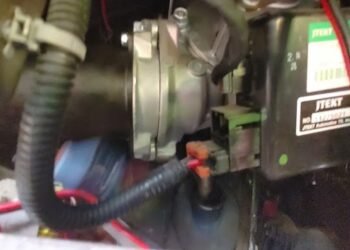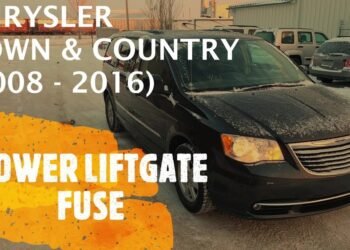If you own a Dodge Durango with a capless gas tank, you might have faced some frustrating issues when trying to fill up or keep your fuel system sealed. Maybe you’ve noticed the fuel door flap not opening smoothly, or your check engine light comes on due to an evaporative system leak.
These common capless gas tank problems can disrupt your driving experience and even lead to costly repairs if ignored. You’ll discover why these issues happen, how to spot them early, and practical fixes that can save you time and money.
Keep reading to take control of your Dodge Durango’s fuel system and avoid unexpected headaches at the pump.

Credit: www.amazon.com
Capless Gas Tank Issues
The Dodge Durango features a capless gas tank design for easier fueling. This system removes the traditional gas cap and uses a flap that opens when you insert the fuel nozzle. While convenient, some drivers face issues with the capless gas tank system. These problems can cause frustration and affect the vehicle’s operation.
Understanding the common issues with the capless gas tank helps owners identify and fix problems quickly. The following sections explain the symptoms and how these issues impact the Durango’s performance.
Common Symptoms
One common symptom is the fuel nozzle not fitting properly. The flap may not open fully or stay stuck closed. This blocks fuel flow during refilling. Another sign is a persistent check engine light. This can indicate a leak in the evaporative emission system related to the fuel filler. Some drivers notice a strong fuel smell near the tank area. This points to a faulty seal or damaged flap. In colder climates, the flap can freeze shut. This makes filling the tank difficult or impossible without thawing the area first.
Impact On Vehicle Performance
Capless gas tank problems can trigger the check engine light. This happens because the system detects vapor leaks. A leaking seal affects the evaporative emission control system. It can cause higher fuel evaporation and reduce fuel efficiency. In some cases, the vehicle may fail emissions tests. The engine may run less smoothly if the fuel system pressure is off. Fuel smells can create safety concerns. Ignoring these issues can lead to costly repairs later.

Credit: www.youtube.com
Main Causes
The Dodge Durango’s capless gas tank offers convenience but may face certain issues. Understanding the main causes helps identify the root of these problems quickly. Several components in the fuel system can fail or get damaged, leading to gas tank troubles.
Each cause affects the vehicle differently and needs specific attention. Here are the main reasons behind Dodge Durango capless gas tank problems.
Fuel Filler Neck Problems
The fuel filler neck guides fuel into the tank. Dirt, debris, or damage can block it. This blockage makes fueling difficult and may trigger warning lights. A stuck or broken flap inside the neck also causes issues. Regular cleaning and inspection prevent these problems.
Faulty Evap Valves
The EVAP valve controls fuel vapor release. A faulty valve causes vapor leaks and pressure loss. This can lead to the check engine light turning on. Replacing a malfunctioning EVAP valve restores proper system function and stops leaks.
Damaged Evap Hoses
EVAP hoses connect components in the fuel vapor system. Cracks or holes in these hoses cause leaks and poor pressure regulation. This results in fuel odors and error codes. Inspect hoses regularly and replace damaged ones to avoid further issues.
Fuel Tank Pressure Sensor Malfunction
The fuel tank pressure sensor monitors tank pressure for leaks. A malfunctioning sensor sends wrong signals to the engine control unit. This may cause false warning lights or poor engine performance. Sensor replacement fixes these problems and ensures accurate readings.
Diagnosing Problems
Diagnosing problems with the Dodge Durango’s capless gas tank requires careful steps. These problems often relate to leaks or difficulty fueling. Detecting the root cause helps fix issues quickly and prevents further damage. This section covers key methods to diagnose common problems.
Visual Inspection Tips
Start with a close look at the fuel filler area. Check for dirt or debris around the capless mechanism. Inspect the rubber seal for cracks or wear. Look for any signs of fuel leakage or stains. Make sure the flap inside the filler opens and closes smoothly. A stuck flap can cause fueling problems and trigger error codes.
Using Diagnostic Tools
Use an OBD-II scanner to read error codes from the vehicle’s computer. These codes often point to evaporative system leaks. Codes like P0455 indicate a large EVAP leak, often linked to the fuel filler neck seal. Clear codes after repairs to confirm the issue is resolved. Some scanners also show live data to track the fuel system status.
Performing A Smoke Test
A smoke test helps find leaks invisible to the eye. A technician introduces smoke into the EVAP system. Watch for smoke escaping around the fuel filler neck or seals. This test pinpoints leaks causing fuel vapor loss. Fixing these leaks improves fuel efficiency and stops warning lights from appearing.
Credit: www.dodgedurango.net
Quick Fixes
Quick fixes can solve many Dodge Durango capless gas tank problems fast. These easy steps help avoid costly repairs. Most issues come from dirt, faulty parts, or sensor errors. Fixing these keeps your fuel system working well. Here are some simple repairs you can try at home.
Cleaning The Filler Neck
Dirt and debris often block the filler neck. Use a clean cloth to wipe the area inside and outside. A small brush helps remove stuck grime. This prevents the flap from sticking and allows smooth fuel flow. Cleaning keeps the capless system sealed and working correctly.
Testing And Replacing Valves
Valves control fuel vapor flow and must work well. Check for cracks or damage by pressing and listening for leaks. Replace valves if they feel loose or broken. New valves stop fuel smell and improve tank pressure. Proper valve function is key for the EVAP system.
Repairing Or Replacing Hoses
Hoses connect parts of the fuel system and can crack over time. Look for signs of wear, holes, or leaks. Replace any damaged hoses with new ones that fit well. Secure hose clamps tightly to avoid air leaks. Good hoses keep the fuel system sealed and safe.
Sensor Reset And Replacement
Fuel tank sensors send data to the car’s computer. Sometimes sensors give false errors or stop working. Reset the sensor by disconnecting the battery for a few minutes. If problems continue, replace the faulty sensor with a new one. Accurate sensors help avoid check engine lights and improve performance.
Preventive Measures
Preventive measures help avoid common Dodge Durango capless gas tank problems. Taking simple steps can keep the fuel system working well. These actions protect the fuel filler from damage and blockages. They also prevent freezing or leaks that may cause trouble later. Follow these tips to maintain your vehicle’s fuel system and enjoy smooth fueling.
Regular Maintenance Tips
Check the fuel filler area regularly for dirt and debris. Clean the seal gently using a soft cloth. Avoid harsh chemicals that can damage the capless system. Inspect the flap for any signs of wear or sticking. Replace parts that look worn or broken promptly. Keep the fuel door clean and free from rust. Regular checks help spot issues early before they become costly.
Handling Fueling In Cold Weather
Cold weather can cause the capless filler to freeze. Warm the area gently with your hands before opening. Avoid using hot water or heat sources that may damage plastic parts. Fill the tank slowly to prevent fuel splash-back and freezing. If the flap sticks, do not force it open. Wait for the system to thaw naturally to avoid damage.
Using Funnels With Capless Systems
Some fuel cans do not fit well in capless fuel fillers. Use a funnel designed for capless systems to pour fuel cleanly. This prevents spills and keeps the filler clean. Insert the funnel gently without forcing it into the filler. Remove the funnel slowly to avoid fuel drips. Funnels help avoid clogging and keep the system working smoothly.
Security And Locking Options
Security is a key concern for Dodge Durango owners with capless gas tanks. The design offers convenience but raises questions about fuel safety. Locking options help protect against theft and contamination. These solutions add peace of mind while maintaining ease of use.
Locking Gas Caps For Capless Tanks
Traditional gas caps often lock with a key. Capless systems lack this feature by default. Special locking gas caps fit over the capless opening. They provide a physical barrier to prevent unauthorized access. These caps are easy to install and remove. Many models use secure locking mechanisms similar to standard fuel caps. This upgrade enhances fuel security without losing the benefits of a capless design.
Enhancing Fuel System Security
Capless gas tanks can be vulnerable to tampering. Adding a locking gas cap reduces this risk. It also helps keep dirt and water out of the fuel system. A secure fuel system prevents costly repairs and fuel loss. Some locking caps include anti-theft features like tamper-resistant screws. These protect the vehicle in public or high-risk areas. Enhancing fuel security is a smart step for Dodge Durango owners.
Frequently Asked Questions
What Are The Problems With Capless Fuel Fillers?
Capless fuel fillers can freeze in cold, humid climates, complicate fuel siphoning, and require funnels for fuel cans. Dirt or damage in the filler neck may cause leaks, trigger EVAP system errors, and lead to fuel vapor escape.
How To Bypass A Capless Fuel Tank?
To bypass a capless fuel tank, press down on the fuel door flap to open it. Insert a funnel to pour fuel safely. Keep the filler neck clean to prevent blockages. Avoid forcing the flap to prevent damage. This method ensures easy refueling without the traditional cap.
Can You Lock A Capless Gas Tank?
Yes, you can lock a capless gas tank using specially designed locking caps made for capless fuel systems. These add security and prevent unauthorized access.
What Is The Code P0455 On A Capless Gas Tank?
The P0455 code on a capless gas tank indicates a large EVAP system leak. Common causes include a dirty or damaged filler neck seal, faulty purge or vent valves, and cracked EVAP hoses. This leak allows fuel vapors to escape, triggering the error code.
What Are Common Dodge Durango Capless Gas Tank Issues?
Common issues include fuel filler freezing, flap sticking, and difficulty fueling with additives.
Conclusion
Dodge Durango capless gas tanks can cause some trouble. Dirt or damage often blocks the fuel filler neck. This can lead to leaks or difficulty fueling. Cold weather may freeze the flap, stopping fuel flow. Using a funnel helps pour fuel without spills.
Regular cleaning keeps the system working well. Watch for warning signs like the check engine light. Early fixes save money and avoid bigger problems. Stay informed and maintain your Durango for smoother drives.
















